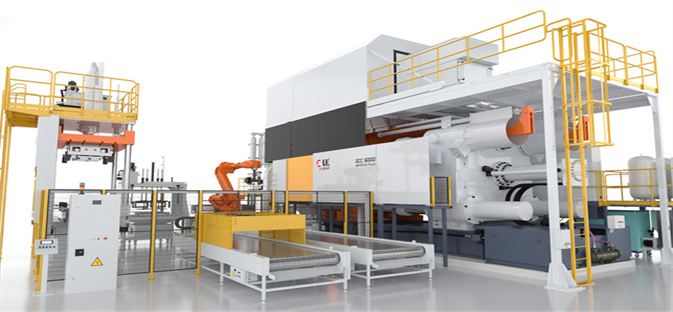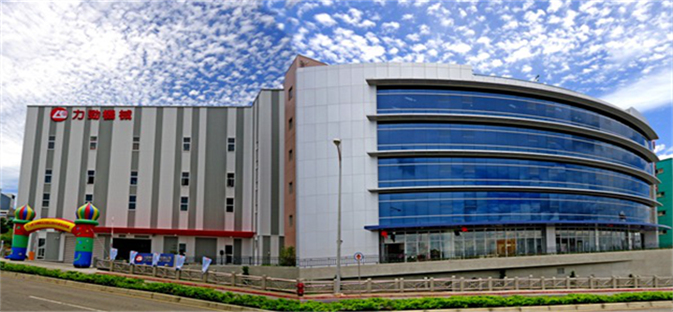Difference between Die Casting and Injection Molding
LK Die Casting Machine / 2024-06-14 15:29:25
Molding Die casting and injection molding are two common metal and plastic processing methods, which play an important role in industrial production.
This article will introduce the difference between die casting and injection molding to help readers better understand the characteristics and applications of these two processing methods.

Die Casting:
Die casting is a processing method in which molten metal is injected into a mold and quickly solidified by high pressure. Die casting is usually used to produce metal parts, such as aluminum alloy, zinc alloy, etc., with high strength and precision.
Die casting is suitable for mass production and can produce parts of complex shapes quickly and efficiently.
Injection Molding:
Injection molding is a processing method in which molten plastic is injected into a mold and quickly cooled by high pressure. Injection molding is often used to produce plastic products, such as plastic parts, containers, etc. to geta good surface finish and molding accuracy.
Injection molding is suitable for mass production and can quickly and economically produce a large number of consistent plastic products.
Difference comparison:
(1). Material: Die casting is mainly used for metal materials, while injection molding is mainly used for plastic materials.
(2). Process: Die casting is to melt metal and inject it into the mold, and injection molding is to melt plastic and
inject it into the mold.
(3). Scope of application: Die casting is suitable for the production of metal parts, and injection molding is suitable for the production of plastic products. Production efficiency: Die casting is suitable for the mass production of metal parts, and injection molding is suitable for the mass production of plastic products.

In general, die-casting and injection molding are two different processing methods, which are suitable for the production and processing of metal and plastic materials respectively.
Understanding the difference between die-casting and injection molding will help to choose the appropriate processing method and improve production efficiency and product quality.
I hope this article can help readers better understand the characteristics and applications of die casting and injection molding and provide reference and guidance for industrial production.
Contact LK Egypt ZAZ to learn more info about the die-casting machine.
Phone: +86 13598704163
Email: jack@zazmae.com https://www.zazdiecasting.com/
#die cast tooling
#trivalent chromate
#rapid prototype casting
#a360 aluminum
#aluminum caster
#aluminum prototype
#ideal 55 slider parts
#density of aluminum kg/mm3
#magnesium sheet metal
#parts of a metal gate
#subcontracting of screw machining for the luxury sector
#wall aluminum
#die casting tooling
#tooling for die casting
#density of aluminium in kg mm3
#clear chromate
#es casting metals
#gating material
#prototype aluminum
#sigma castings
#subcontracting of screw-machining for household appliances
#we squeeze to please machine
#aluminium gravity die casting
#aluminum part
#aluminum rapid prototyping
#nickel casting
#plunger tip for die casting machine
#rapid prototyping aluminium
OTHER CONTENT
-

2024-09-19 14:16:15 LK Cold Chamber Die Casting Machine DCC900 Locking Force: 9000KN Die Height: 400-1000mm Space Between Tie Bars: 930x930mm Shot Weight: 13.5Kg Casting Area Max:2250c㎡
More -

2024-09-19 14:11:06 LK Cold Chamber Die Casting Machine DCC280 Locking Force: 2800KN Die Height: 250-650mm Space Between Tie Bars: 560x560mm Shot Weight: 2.9Kg Casting Area Max:700c㎡
More -

2024-09-19 10:23:07 LK Cold Chamber Die Casting Machine DCC580 Locking Force: 5000KN Die Heigh: 350-850mm Space Between Tie Bars: 760x760mm Shot Weight: 6.9Kg Casting Area Max:1250c㎡
More -

2024-09-19 10:11:20 LK Cold Chamber Die Casting Machine DCC400 Locking Force: 4000KN Die Height: 300-700mm Space Between Tie Bars: 669x669mm Shot Weight: 4.7Kg Casting Area Max:1000c㎡
More

